on a dataframe that contains the price of bitcoin, I want to measure the strength of a trend by displaying the angle of the slope of a moving average (calculated over 20 periods) on each row.
A moving average allows you to analyze a time series, removing transient fluctuations in order to highlight longer term trends. To calculate a simple 20-period moving average for trading purposes, we take the last 20 closing prices, add them together and divide the result by 20.
I started by trying to use the linregress function of scipy but I get the exception "len() of unsized object" that I could not solve:
from scipy.stats import linregress
x = df.iloc[-1, 8] # -1:last row, 8: sma20
y = df['sma20']
df['slope_deg'] = df.apply(linregress(x, y))
I then used the atan function of the math module but the result returned is always nan, whatever the row is:
import math
df['sma20'] = df['Close'].rolling(20).mean()
slope=((df['sma20'][0]-df['sma20'][20])/20)
df['slope_deg'] = math.atan(slope) * 180 / math.pi
... or 45 :
import math
df['sma20'] = df['Close'].rolling(20).mean()
df['slope_deg'] = math.atan(1) * 180 / math.pi
df
Here is an example of code with the date as an index, the price used to calculate the moving average, and the moving average (over 5 periods for the example):
df= pd.DataFrame({'date':np.tile( pd.date_range('1/1/2011',
periods=25, freq='D'), 4 ),
'price':(np.random.randn(100).cumsum() + 10),
'sma5':df['price'].rolling(5).mean()
})
df.head(10)
Can someone help me to create a column that returns the slope of a moving average?
